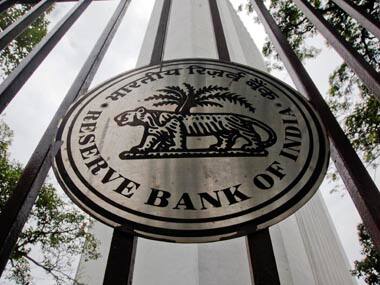The Reserve Bank of India (RBI) move of reducing the marginal standing facility (MSF) rate - the rate at which it lends emergency short-term funds to banks - by another 50 basis points is a continuation of the stance governor Raghuram Rajan announced on 20 September while unveiling his maiden credit policy review.
RBI had cut the MSF by 75 basis points and raised the LAF repo rate - the rate at which it lends to banks - by 25 bps to send a signal that it was determined to continue its battle against inflation.
The fact that the MSF will be further reduced was amply indicated by Rajan during the policy review -where the governor made it clear that the first cut in MSF since it was raised to counter the sharp slide in the rupee - was aimed at an announcement of the RBI’s intention to normal monetary operations where the repo rate would be the effective policy rate and liquidity conditions would not be as tight as they were. He also clearly announced then that the difference between the MSF and the repo rate would be 100 basis points.
The exact timing of the second cut in the MSF may have foxed some analysts, but RBI had hinted that further cuts could be outside of policy review days and a return to easier liquidity could be expected as the currency markets stabilized. The 7 October cut is therefore a step in the same direction. Alongside, the RBI has opened a fresh liquidity avenue by announcing term repos of 7-day and 14-day tenor for notified amounts equivalent to 0.25 percent of the net demand and time liabilities (NDTL) through variable rate auctions every week. This should also provide a relief to those banks starved of liquidity.
[caption id=“attachment_1159887” align=“alignleft” width=“380”]  The reasons why RBI went ahead with its two pronged move to ease liquidity aren’t far to seek. Reuters[/caption]
The reasons why RBI went ahead with its two pronged move to ease liquidity aren’t far to seek. With the US Fed’s quantitative easing (QE) taper having been postponed, the rupee has returned to some degree of sanity. There are also analysts who believe that the shutdown of the US government and the current debate on the debt ceiling may have pushed the taper to calendar 2014.
Kotak Mahindra Bank chief economist Indranil Pan believes the build-up of the RBI’s reserves via the swap window of the FCNR(B) is most likely providing the RBI with some confidence in currency market dynamics. “From the market perspective, this is also reflected by volatility in the USD/INR rate, which appears to have eased both on the intra-day and forward basis,” he says.
There was also probably a need to ease the liquidity squeeze faced by the banking sector in the run-up to the busy credit cycle. Liquidity pressures tend to arise due to festivity-related increases of currency in circulation. Until the fortnight ending September 20, credit grew at 17.9 percent, much ahead of the 14.1 percent growth in deposits.
Pan believes the7-day and 14-day repo operations will also shift a part of the banks’ borrowings away from the MSF to the repo window,
reducing their average borrowing cost at the short end of the curve.
However, while the currency scenario may have stabilized and the liquidity issue addressed, everyone seems to be reconciled now to more repo rate hikes in the coming days, including one more as early as 29 October, when RBI meets again for its policy review.
Says Pan: “…Markets should remain adequately guarded against repo rate hikes as the RBI looks to normalize the MSF-repo rate corridor back to 100 bps and as inflation concerns continue. We expect a 25 bps cut in MSF rate to 8.75 percent and 25 bps hike in repo rate to 7.75 percent to reduce the MSF rate and repo rate corridor back to 100 bps.”
Pan adds that the continuing challenge for the RBI to manage inflation pressure was leading him to believe in this 25 bps increase in the repo rate. “Simultaneously, the MSF rate will likely be reduced by a further 25 bps to 8.75 percent as the currency remains range bound. We expect the USD/INR to be in the 61-64 range and volatility to ease into a comfortable zone,” he adds.
Echoing a similar view, Leif Eskesen, chief economist, India and ASEAN at HSBC says RBI will also have to demonstrate that it is serious about anchoring inflation expectations, which means that it will have to further hike the repo rate and continue to communicate a hawkish stance. “This implies a repo rate hike of at least 25bps this year, which would reestablish the spread between MSF and repo rate at a 100 bps if the MSF rate is cut by 25bps as we expect.”
Eskesen reckons these steps may well come as soon as the October monetary policy meeting, although data flows (trade and CPI data) and external developments would be important determinants of the timing and magnitude of future steps.
Growth and reform
Corporate India, meanwhile, has responded with cautious optimism to RBI’s move. Rana Kapoor, founder and CEO of private sector YES Bank, who is also president of ASSOCHAM, says it is now imperative for the government to push ahead with the reforms agenda.
Says Kapoor: “With external sector developments showing a marked improvement and evidence on the utility of interest rate defense remaining hazy, the current set of easing measures will help RBI to focus on growth risks.”
Adds Eskesen: “Naturally the RBI needs a helping hand from the government to stabilize macroeconomic conditions in the short term and eventually see growth recover. The recipe for this is sticking to fiscal consolidation and moving from announcement to implementation of structural reforms, including starting the investment projects expedited through the Cabinet Committee on Investment.”


)
)
)
)
)
)
)
)
)



